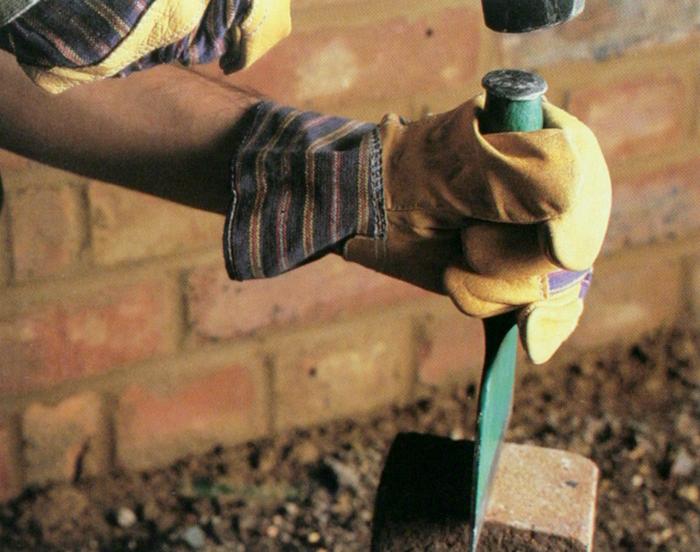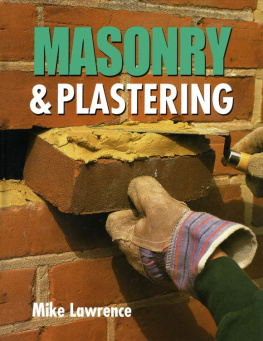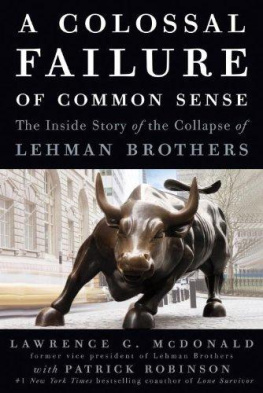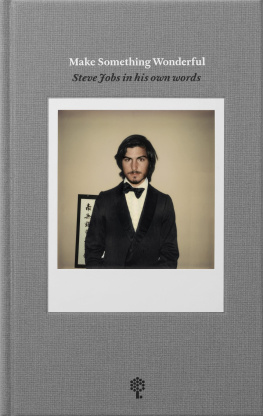The phrase bricks and mortar is a modern euphemism for house and home; it is what every home owner spends a working life investing in, and it represents the biggest asset most of us ever own. Few people actually spend their lives laying bricks and mortar, but there are plenty of opportunities for the amateur to dabble in bricklaying and masonry work especially in the garden and in related crafts such as plastering. Indeed, with the high cost of employing professional craftsmen of all types, there is every incentive for the do-it-yourselfer to master these skills and to marry them to his or her own creative talents. The end product may be nothing more ambitious than a low garden wall or a feature fireplace in the living room, but it will have the unmistakable stamp of individuality on it.
Most of the building projects covered in this book are outdoor ones, for two reasons. The first is that your early attempts to get mortar to adhere to bricks, and bricks to stack up the way you want them to, are bound to lead to a certain amount of mess, and it is far easier to cope with this in the garden than in the house. The second is that few people actually want to knock their homes about structurally, but long to turn their gardens into a unique feature with a patio to catch the sun, walls and planters to display their favourite plants and shrubs to best effect, and perhaps an ornamental arch leading the way to the vegetable garden. This book will show you some of the things you can easily achieve.
Even if you decide that you would prefer to leave constructional projects to the professionals, you will still be faced with that seemingly endless task of keeping your property its bricks and mortar, if you like in sound condition. In the second part of the book you will find advice on everything from repointing walls and patching drives to repairing concrete floors and patching plaster. Each is a small but worthwhile step in maintaining the value of your investment, as well as in making your home a pleasant place to live.
Most people think of working with bricks and mortar, concrete, paving slabs and walling blocks, even plastering walls and ceilings, as the heavy side of do-it- yourself . Yet there can be few more rewarding ways of spending a day, a weekend, even a season, than in creating a structure of your very own from a formless pile of building materials. As you progress from humble beginnings to more elaborate projects, you will find that there is little mystique in the craft of bricklayer, stone mason or plasterer: all are classic examples of the old adage that practice makes perfect, and practice time will cost you nothing!
This section of the book looks briefly at some of the projects you may want to create, and at the basic skills you will need to carry them out.
What to Tackle Outdoors
If you have never laid a brick or mixed a bucketful of mortar in your life, it is best to start learning by tackling some basic outdoor building projects. Here are some you could consider.
Hard surfaces Whether you have inherited a virgin plot, a neglected wilderness or a reasonably well-kept garden, one job you are sure to want to tackle is the laying (or re-laying) of some hard surfaces to allow you to use the plot in all weathers. These could include a driveway for your car, a path round the house and down the garden to the greenhouse, a patio that catches the sun or allows you to admire the view, even an area for the children to play on when the lawn is too wet. Whichever of these you decide to create, you can use any of a wide range of building materials.
Your choice of materials for each of these surfaces will be decided by a combination of factors. One of the first you will think about is the cost, and somewhat surprisingly you will find that seamless materials such as concrete and macadam cost broadly the same to lay per unit area as paving slabs and blocks (although there are variations in slab and block prices depending on type). The reason lies in the hidden costs of each typethe extras over and above the cost of the material itself.
There are other factors of equal importance , of course. To begin at the beginning, you need to think about how easy the chosen material will be to transport, to move around the site as well as to lay. For example, concrete is hard work to mix and move around in large quantities, while slabs and blocks are easier to handle and can obviously be transported in manageable quantities. Speed of laying, and the time within which the surface can be used, are important too. Concrete takes time to place and needs time to harden, as does macadam, while dry-laid blocks or slabs are quick to lay and can be used immediately . At the other extreme, it can take weeks to point a large area of crazy paving; bedding the pieces is the easy part of the job!

Fig 1 Acquiring some basic bricklaying skills will allow you to tackle a wide range of creative projects and also to carry out essential home maintenance jobs.
Think too about appearances and future maintenance. Concrete can discolour and break up in time, and major repairs can be difficult to carry out. Macadam can be softened by oil spillages, may become tacky in hot weather and will dent under point loads, but is easy to patch if necessary . Gravel is no good for sloping sites, needs regular raking and weed-killing and can escape onto lawns (or indoors on peoples shoes), but looks good and is a wonderful burglar deterrent no one can tip-toe quietly up a gravel drive! Slabs and blocks offer the widest choice in surface appearance and once laid should need little maintenance.
What to Tackle
On the subject of looks, remember too that the shapes you want for your hard-surfaced areas may dictate which material you use; seamless materials and small blocks are much easier to lay in curved shapes than large paving slabs.
Apart from hard surfaces to walk, drive or sit on, you may also need areas of hard standing for other purposes as bases for outbuildings, for example, or for a barbecue in the garden. Here looks are less important than performance, and concrete slabs are often the best choice.
Walls Walls are next on the agenda. What you want to build depends to a large extent on your site; you will obviously have more scope for elaborate construction projects on a sloping site, but even on a level one you can build anything from low-level planters (which also have the advantage of making gardening easier if you have arthritic knees or a bad back) to feature walls dividing up the garden or creating screened and sheltered spots for sitting out. Walls undoubtedly make the best boundaries too, especially at the front of your property where privacy and security are particularly important features, and here the scale of the job gives you plenty of scope for originality.
Your choice of walling materials is even wider than for hard surfaces, ranging from bricks to natural stone (if you can get it or are able to afford it), or the host of imitations of natural walling materials now available. Here your main criterion must be looks; laying a brick, a walling block or a lump of sandstone involves broadly the same technique and takes much the same time performance is much of a muchness too.
















